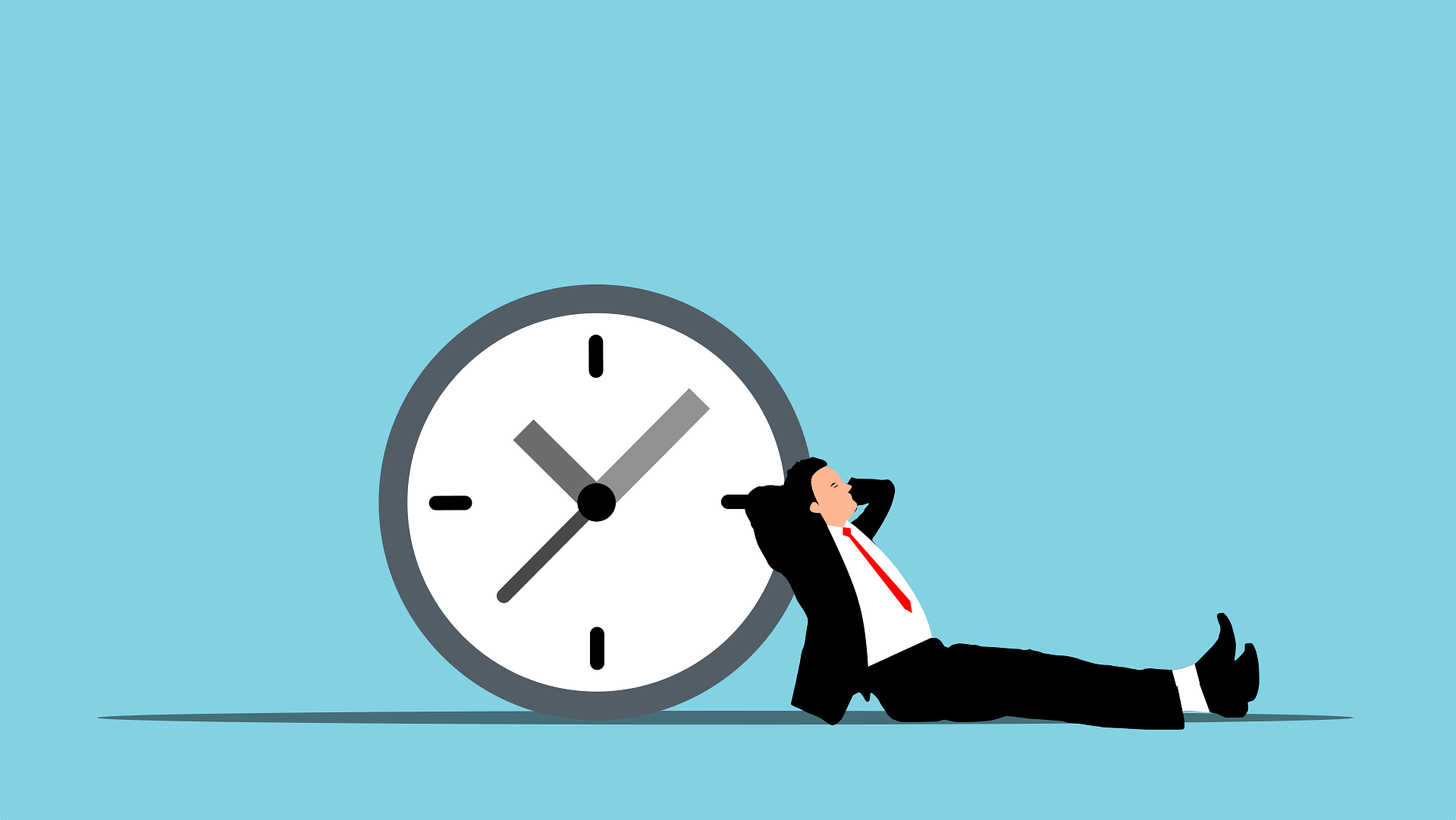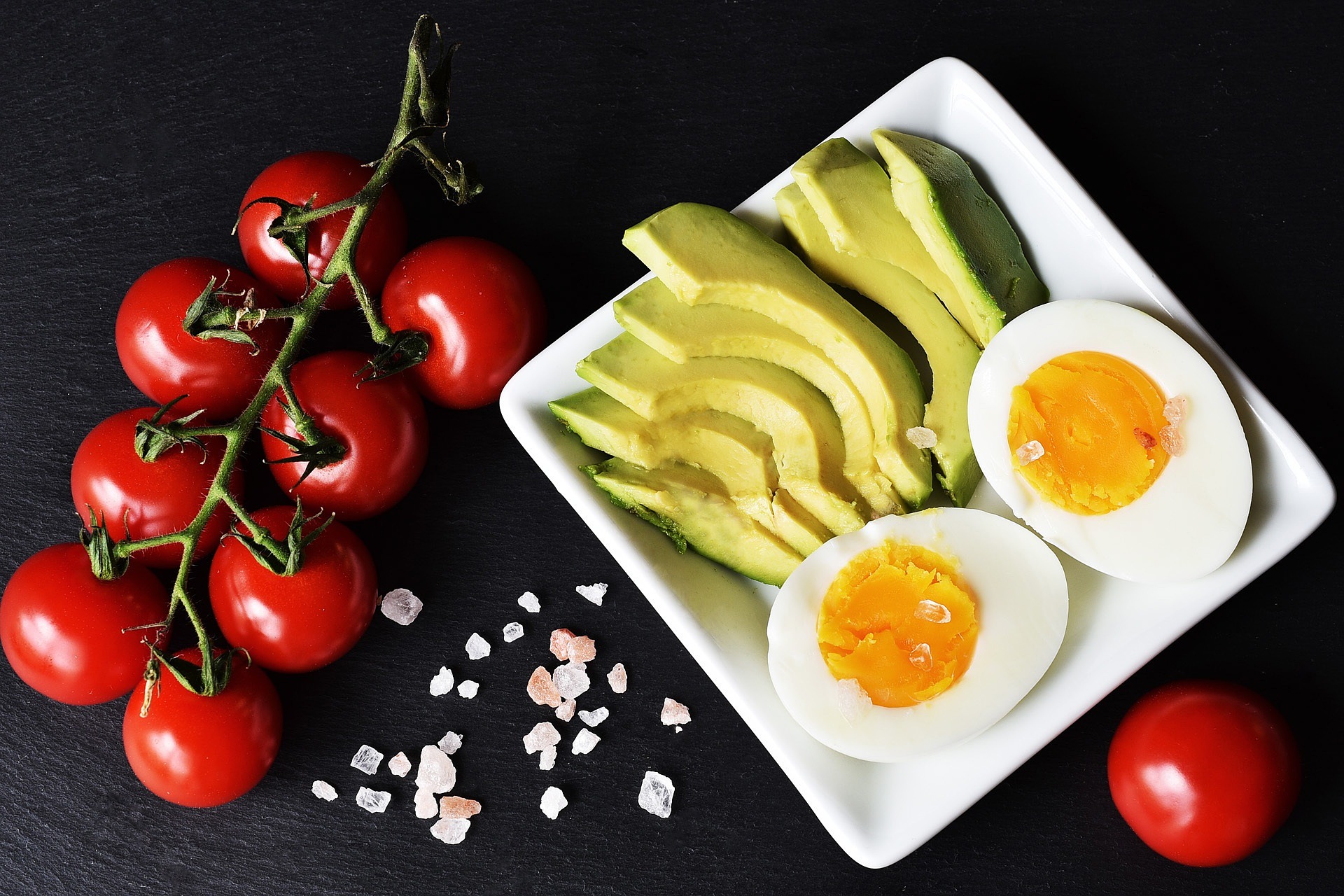3-Bullet Summary
You’ll benefit more from reading the article the whole way through. But, if you’re pressed for time, here’s a condensed version of The Perfect Morning Routine for Students:
- The average student’s morning routine sets them down a slippery slope for the entire rest of the day.
- This is mainly because they perform activities that work against their bodies’ natural circadian rhythms (body clocks).
- There are 5 basic steps to the perfect morning routine for students: light exposure, hydrate, cold shower, don’t eat anything and deep work.
How Many Mistakes Can You Spot?
“Ring!” screams your alarm clock, as you hesitantly open your eyes.
You muster the brainpower to hit snooze. “I’ll only lie in for another 15 minutes,” you say to yourself before gently shutting your eyes again.
45 minutes later…
You reawaken. However, this time, it wasn’t because of your alarm clock. You just naturally woke up when you felt ready.
Instead of getting out of bed and officially starting your day, you reach for your phone, which rests conveniently on your bedside table. The screen illuminates as you lift it, displaying a host of colourful notifications. Instagram, TikTok, YouTube, all the prime candidates that distract you, chanting their siren song.
You open them systematically. You browse all the stories and shorts. “I won’t be long,” you assure yourself.
30 minutes later…
You finally get out of bed. You walk over to the wardrobe, your hands warm and clammy from the social media scrolling, and sift through an untidy wardrobe. Another 10 minutes pass as you search for the right clothes to wear.
Once you’ve made your decision, it’s a shower. Then, it’s to the hairdryer (if you can be bothered). Okay, you’re getting somewhere now! Surely it’s about time you get started with the day’s work, right?
As you pass through the kitchen to go to your workspace, you grab a cereal bar.
Fatal error.
Once you’re at your desk, you place your phone right beside you. You switch your laptop on and open the cereal bar. As the laptop boots up, you bite into the sweet, crunchy puffed rice, simultaneously reaching for your phone to scroll through social media again.
Your laptop’s actually on now. But, you’re so engrossed in the sugar and your phone that you haven’t even noticed.
You also haven’t realised that the breakfast you’ve just eaten will cause a sugar crash that’s going to wipe your ability to focus in an hour.
Simply put, you’re totally unaware that your morning routine has set the rest of your day down a slippery slope.
Introduction
If there’s one time of day where students mess up, it’s the morning.
When I was in secondary school, here was my weekend morning routine:
- Wake up (good)
- Watch YouTube with my brother for an hour (not so good)
- Eat a sugar-packed breakfast (I thought Müller yoghurts and cereal were healthy)
- Play my Xbox for 2 hours (also not so good)
- Shower (somewhat good)
- Start studying (good)
Would you believe me if I said that, in hindsight, I could’ve been more productive?
You should, because I soon realised that this was the case.
See, one day, I stumbled across a book called The 5am Club. I’d heard YouTubers speak about it before — you know, the type of YouTubers that scream at you and tell you to embrace discomfort. They told me that this book gives you a secret tool that you can use to skyrocket your productivity and success.
A productive morning routine.
So, I read it. What did I do immediately after? I grabbed a pen and piece of paper and created a morning timetable.
You see, the author explained the power of the morning routine so convincingly that I was embarrassed about my own. I took a pledge that day to value my morning like a sapphire, and started experimenting with various productivity principles he outlined.
Some failed miserably. (Cough… Waking up at 5am… Cough.) Others worked so well that they improved my performance, energy and grades. They haven’t left my morning routine in years.
The goal of this article is to provide you with a simple set of tools that you can use to optimise your morning routine. If you read closely and take action, your life, health and productivity will improve so much that you’ll never go back to a social media doom scroll upon waking again.
I mean, one of the strategies we’ll cover today has been scientifically proven to be the difference between high energy levels and depression!
But, before I convey these strategies to you, there’s something you need to know about. If you don’t pay close attention to this one thing, then the morning routine I’m giving away to you won’t work effectively.
The Purpose of the Morning Routine
Let me ask you a question: why does a morning routine for students matter? Think about it; I’ll wait.
…
Ready for the answer? Well here it is: ‘Take excellent care of the front end of your day, and the rest of your day will pretty much take care of itself‘. This answer comes from Robin Sharma, who wrote The 5am Club. The reason it’s so spot on is due to some very interesting science.
If you’ve read The Ultimate Guide on How to Sleep Better (which you absolutely should have), then you’ll be familiar with a concept called the circadian rhythm. This essentially refers to your body’s clock. As the clock ticks, the day goes on and the body receives certain signals (remember that word), how you feel changes. For example, as it gets darker, the body is signalled to start feeling tired because of a hormone called melatonin, which prepares us for sleep.
This concept explains why a morning routine for students is so vital.
Why? Simple: the morning routine, if executed properly, is a signal to your circadian rhythm!
Doing the right things in the morning tells your body that it’s go-time, kicking your circadian rhythm into morning mode. Because the body is pre-programmed to feel awake in the morning, this then leads to a cascade of hormones and chemicals being released that promote alertness and energy.
Testosterone and cortisol, for instance, both spike in the morning (at slightly different times)1. Testosterone is an anabolic (muscle-building) hormone that peaks first and has been associated with energy, positive mood and mental sharpness2. Cortisol peaks just after and is a catabolic (muscle-consuming) hormone that is part of the body’s sympathetic (fight-or-flight) nervous system, meaning it facilitates all the things you’d need to overcome stress, like increased alertness3.
These hormones (among others) both naturally spike when you wake up. However, there are things you can do during your morning routine to ensure their spikes are optimal, and inform your circadian rhythm that it’s time for them to occur. If you do these things, then your mornings will go from slow and monotonous to fast and productive.
TL; DR: provide the right signals to your circadian rhythm via your morning routine to release the hormones that are optimal for focus and performance.

The Perfect Morning Routine for Students
So, the morning routine is evidently important for its role in regulating our body clocks. With this in mind, we can make better decisions about the things we do in our mornings. We won’t do things that signal our bodies to rest, for instance, as that would be counterintuitive to how we want to feel in the morning.
You may have read articles before this one that gave you enormous lists of habits to implement in your morning routine. Meditation, exercise, journaling, reading, stretching — copious activities to do that are so called ‘optimal’. As a result, you may still be a bit hesitant to get into a proper morning routine because it just seems impractical and difficult.
I understand your pain. That’s why I’m going to give you a set of just 5 simple strategies. You’ll get all the benefits that a morning routine can physically provide, without having to do a tonne of wishy washy practices that frankly just detract from your ability to focus and get on with your life.
At the end of the day, what’s the point in a morning routine you can’t be asked to repeat? Strong Students want results — fast — not shopping lists of habits. That’s why this framework is comprised only of evidence-based strategies that seamlessly fit into the busiest of schedules.
Let’s stop overcomplicated morning routines once and for all! Here are the 5 steps to the perfect morning routine for students.
Step 1) Light Exposure
The start of any good morning routine is light exposure.
Sunlight in particular is essential for a student’s morning routine for a few key reasons:
- It activates your circadian rhythm — ‘[L]ight advances the clock’4. By this, researchers in 2019 essentially suggested that light tells the body clock to start ticking. Once the clock starts ticking, the cells in your body realise that it’s daytime and initiate the hormone cascade that promotes wakefulness.
- It improves alertness — Studies have shown that light exposure increases energy levels and brain activity5. This means that getting morning sun sets you up for a burst of vigour and focus.
- It bolsters your immune system — Sunlight exposure has been shown to reinforce the immune system6. This is crucial because a strong immune system protects you from illness, allowing you to work at maximum capacity and avoid unproductive sick days.
I could go on and say how sunlight promotes vitamin D synthesis and literally combats depression, but you get the picture: sunlight does amazing things for your performance. (If you want to learn more, check out this video by Andrew Huberman.)
To reap the benefits it has to offer, make a beeline for 10–15 minutes of direct (i.e., not through a window or the lens of sunglasses) daylight exposure after waking up. There’s no excuse to not do this.
Don’t think you can? Just stack it on top of something else in your morning routine, like the habit we’ll cover in Step 2.
“But what do I do on overcast days?” you may be thinking to yourself. I hear you. I come from Britain, where we get 9 months of bad weather and then winter. Fortunately, though, this habit is bulletproof. You see, the sun is still brighter than any light around you, even on the cloudiest of days. This means that even if you can’t physically see the sun, it’s still there — begging you to come and expose yourself to it in the morning (keep it PG, though, because the sun is innocent).
If you want to get fancy, you could even do some light exercise to get your core body temperature up at the same time, which is what your body wants to do in the morning. I usually go for a short walk whilst getting my morning sun, and this greatly improves my mood and alertness.
Step 2) Hydrate
You’re probably not drinking enough water.
Studies have shown that over 50% of students are at least partially dehydrated7 and another 50% drink plain water less than 3 times per day8.
This is literally a pandemic.
Why should you be concerned, though?
Humans — me and (probably) you — are 70% water. Our cells, muscles and tissues are all dependent on water to function effectively. If we don’t have water, as you can imagine, pretty much everything goes haywire. In fact, after 3 days without water, we die.
Now, I strongly doubt you’re so dehydrated that you’re on the verge of death. But, if you’re in the partially dehydrated 50%, then you’re massively capping your potential:
- Proper hydration improves cognitive performance — Research has shown that being sufficiently hydrated boosts attention, concentration, and short-term memory9. This is primarily because the brain is 75% water, meaning it is literally dependent on water to function and fire.
- Proper hydration increases metabolism — Adequate hydration also promotes a higher metabolic rate10. This basically means that your body burns more energy and, as a result, functions at a higher capacity when it’s not dehydrated.
- Proper hydration boosts your grades — One very interesting study into 447 undergraduate students discovered that students who bring water bottles into exams perform 5% better, on average, than those who don’t11. Moreover, they also outperform them in terms of end-of-year grades, too. Is this because water bottles are study hacks? No. Is this because water is necessary for your brain and body to actually work as effectively as possible? Absolutely.
So, water is a big deal. But why is it part of the ideal morning routine for students?
Basically, it’s because the morning is the time of day at which we’re most dehydrated. Not only do we not drink much before bed, but we don’t whilst we’re sleeping, either. Therefore, it makes logical sense to down some water upon waking.
But how much?
To answer this question, we must first unearth how much water we need to consume per day.
Research has suggested that the absolute bare minimum for the average person is 1.8 litres per day12. This is about 8 glasses of water (240ml) every 8 hours (think one glass per hour). But, as the authors point out, this is not personalised. So, as per the advice of sports scientist Andy Galpin, aiming to get at least half of your bodyweight (lbs) in fluid ounces per day is a better alternative to find your minimum.
With your baseline established, it’s time to adjust based on environment and/or exercise. If you live in warmer conditions and/or exercise regularly, you’ll need to drink more than half your bodyweight in ounces. I could give you an equation to determine how much, but that’s less practical than just looking at your urine and adjusting accordingly. If it’s dark yellow, then you should drink more; if it’s crystal clear, you should drink less. Aim for pale lemonade.
Once you roughly know how much you should be drinking per day (i.e., your urine throughout the day isn’t consistently dark), aim to consume about 20% of this upon waking. For most of you, that’ll probably be about 2 glasses of water (480ml). You’re doing this to frontload your water consumption (i.e., do it early so you don’t have to do it later when it could harm your sleep).
Nothing’s stopping you from literally filling up a water bottle before bed, leaving it in the fridge, and drinking it in the next morning. Moreover, you can even combine hydration with morning sun exposure and kill two birds with one stone.
Convenient. Effortless. Effective. Get drinking.
Step 3) Cold Shower
You’re going to hate me for this one initially, but once you try it you’ll thank me.
Cold exposure is an integral part of any morning routine for students. This could be an ice bath, but it’s simply not as accessible as a cold shower, so we’re going to stick with the latter.
You see, from the late afternoon onwards, our bodies progressively cool down13. This allows us to sleep properly. However, after about 4:00am, our body temperatures gradually rise and continue to do so until the late afternoon is reached. Therefore, in the morning, our goal is to get warm to support this natural cycle.
Exercise is a perfectly valid option, hence why I walk in the morning. However, I understand that not everyone is able to exercise first thing in the morning, nor may want or have the time to.
So, your next best bet is the cold shower. Yes, you heard me right.
Let me explain.
The process of deliberate cold exposure causes vasoconstriction14. This is scientific lingo for the tightening of blood vessels. Once this happens, our bodies naturally decrease heat loss and increase metabolic heat production to warm us back up. If you do this in the morning, when your body naturally wants to warm up regardless, you’re providing a strong signal to your body clock that it is indeed the morning, causing you to feel how a human should in the morning: awake!
As well as boosting our core body temperatures, cold showers have also been shown to facilitate the production of catecholamines, like dopamine and adrenaline15. Catecholamines are essentially chemicals involved in the body’s sympathetic (fight-or-flight) nervous system. They encourage us to move rather than stay put.
Therefore, in the morning, because we want to feel sharp and alert, catecholamines are essential. For this reason, the cold shower is a potent tool in your student morning routine.
But how do you actually muster the will to get in? How cold should it be? How long should you stay in for?
- Getting in — Start off warm and decrease the temperature when you’re ready. This strategy is much easier than getting in cold, as you overcome the initial psychological barrier/pain.
- Temperature — Make it so the water is cold enough that you want to get out but are comfortable enough to actually stay in. You’ll know you’re doing it right if you trigger the respiratory gasp as soon as you get in: an instinctive deep breath that occurs when the water hits your upper back16. What is cold differs per individual, though, so find your sweet spot.
- Duration — Try to progressively overload to 1–2 minutes of cold per shower (7–14 minutes per week). Start small and build up as you get more acclimated.
TL; DR: want an insane mood and energy boost in the morning? Get cold!
Step 4) Don’t Eat Anything
This is the easiest step on the entire list because you don’t have to do anything new at all!
See, most morning routines only tell you to add things in. If you go onto Google right now and enter something like ‘productive morning routine’, I guarantee that not a single article will tell you to not do something.
However, there is one thing that we absolutely should not be doing upon waking: eating.
Isn’t breakfast the most important meal of the day?
Nope. In fact, the idea that breakfast is ‘the most important meal of the day’ was pioneered by John Harvey Kellogg: the guy who invented Kellogg’s cereals. (Convenient, huh?)
This does not mean, however, that I am anti-breakfast. Studies have continuously shown that students who consume breakfast significantly outperform those who skip it, and demonstrate fewer behavioural issues17. If I told you to skip breakfast, then I’d be conflicting with years of solid science, as well as doing you, a student, disservice.
What I am however, is anti-early breakfast.
Let me explain why.
As I mentioned earlier on Twitter (X) this week, intermittent fasting, which basically refers to delaying your normal breakfast time by a couple of hours, can massively improve your productivity.
When you don’t eat for a sustained period of time, such as after a long night, your body activates its sympathetic (fight-or-flight) nervous system. Hormones we’ve previously discussed, like cortisol, as well as energy-boosting catecholamines get released into the bloodstream to encourage you to get moving and find some food.
Back in the day, you would’ve channelled this energy and motivation to hunt down a deer or pick some berries. Nowadays, however, because food is so accessible, why not channel it towards attacking mentally challenging tasks? Why not leverage all the mental clarity and sharpness you get from fasting to work hard and earn a big, satiating breakfast when you’re finished?
Quite honestly, intermittent fasting is a cheat code for performance. Not only do you get flooded with energy-boosting chemicals, but you also avoid the infamous post-meal ‘sugar crash’ that makes you feel sleepy.
If you compare the morning performance of a student who eats a carbohydrate-rich breakfast against one who’s fasting, simply put, they will get dominated. The fasting student will have more energy, be more focused, and hungrier (no pun intended) to hustle and make progress.
If you want to get started with intermittent fasting the Strong Students’ way, there’s a section on it within The Ultimate Guide on How to Focus for Maximal Productivity. In short, however, your goal is to not eat anything for 14–16 hours per day. For most people, this simply means pushing their normal breakfast back by a couple of hours, and not eating anything 1–2 hours before bed.
You won’t believe how effective intermittent fasting is. Beautifully, it is also the perfect compliment to the final step of the perfect morning routine for students.
Step 5) Deep Work
In Eat That Frog (a fantastic book, which is also very short), the author, Brian Tracy, says that you should aim to eat a frog every day.
This doesn’t mean chowing down on a toad. (Phew!) Instead, it’s a metaphor. Eating represents an action — doing something. The frog symbolises a challenge — a demanding process goal (a habit), which, if completed, moves you towards one of your big outcome goals (an event). Therefore, eating that frog essentially means doing the most challenging, important thing that you need to do to make meaningful progress towards a big goal.
Every student needs to eat a frog daily. There’s always a big thing that a student could be working on that would move them towards their biggest outcome goal: achieving an elite grade.
If you followed The Ultimate Guide on How to Set Goals and Secure Success (go there now if you haven’t), then you’ll have set yourself 1–3 big outcome goals and reverse engineered the steps to get there. Because your priority outcome goal as a student is getting a top grade, the most important frogs you need to eat (process goals) are related to studying and revising actively, as well as completing coursework assignments (if you have them).
Because these two frogs are so cognitively demanding, they require a lot of mental energy.
That’s why we eat them in the morning, after all the previous steps have been completed.
Think about it, every step we’ve covered in this morning routine for students has one common trait: the promotion of energy and focus. If eating a frog, such as studying actively or working on a big assignment, requires so much effort, then the perfect time to do it is in the morning! Doing so allows you to use all the mood-boosting, energy-promoting chemicals and hormones you’ve accumulated throughout the previous steps on something that matters: your grades!
So, the final step of the perfect morning routine for students is to engage in deep work. Recall that this is Cal Newport’s concept. It refers to a state of intense, uninterrupted focus. Within this deep work block, which will last for 1–2 hours, you will ‘eat that frog’. In essence, you’ll work on the most important, mentally demanding activity related to achieving your grade-related outcome goal.
If you’ve gotten your morning sun, hydrated, taken a cold shower and not eaten, then this deep work block will be intensely productive. Believe me. In fact, you’ll never go back to your old ways after you realise its power. You’ll shock yourself with the amount of work you get done.
I urge you, from the bottom of my heart, to start doing deep work in the morning. If this deep work is dedicated to eating a frog, then you will make unbelievable progress, especially if you’re consistent.
Final Thoughts: The Perfect Morning Routine for Students
The next time you have a morning class, I want you to do something for me. Over the span of a 5-minute period, count how many yawns you witness or hear.
You’ll be gobsmacked.
The students around you will be shattered, despite waking up barely waking up 2 hours ago. This is because countless numbers of students treat their mornings with disrespect. They eat sugary foods, scroll on their phones, fail to hydrate and don’t even go outside!
That’s your competition.
You, due to being armed with the perfect morning routine for students, can eclipse them. Whilst they’re slumbering around, you’re going to be alert and sharp, so long as you’re consistent.
Show up every morning and complete each of these steps, and you’ll realise just how much potential you have. Fail to accomplish these steps most days, and you’ll restrict the morning from working for you as best it can.
To strengthen your morning performance even more, I’d strongly recommend reading through two bonus resources:
- The Ultimate Guide on How to Focus for Maximal Productivity — All the steps in this guide are effective, as long as you can focus. If you get easily distracted, then even the perfect morning routine for students won’t do you any favours. Read through the guide on focus if you haven’t already to bulletproof yourself from mental energy drains.
- The 10 Secrets of Strong Students — This *free* eBook walks you through 10 science-based hacks that the highest-performing students use to dominate their studies. If you’ve read this far, then I know you’ll love it.
If you know a student who’d benefit from a better morning routine, share this article with them by hitting the social icons below. A simple share is all it takes to save a student from the unproductive morning dilemma!
Stay strong,
Sam.
Founder, Strong Students.







